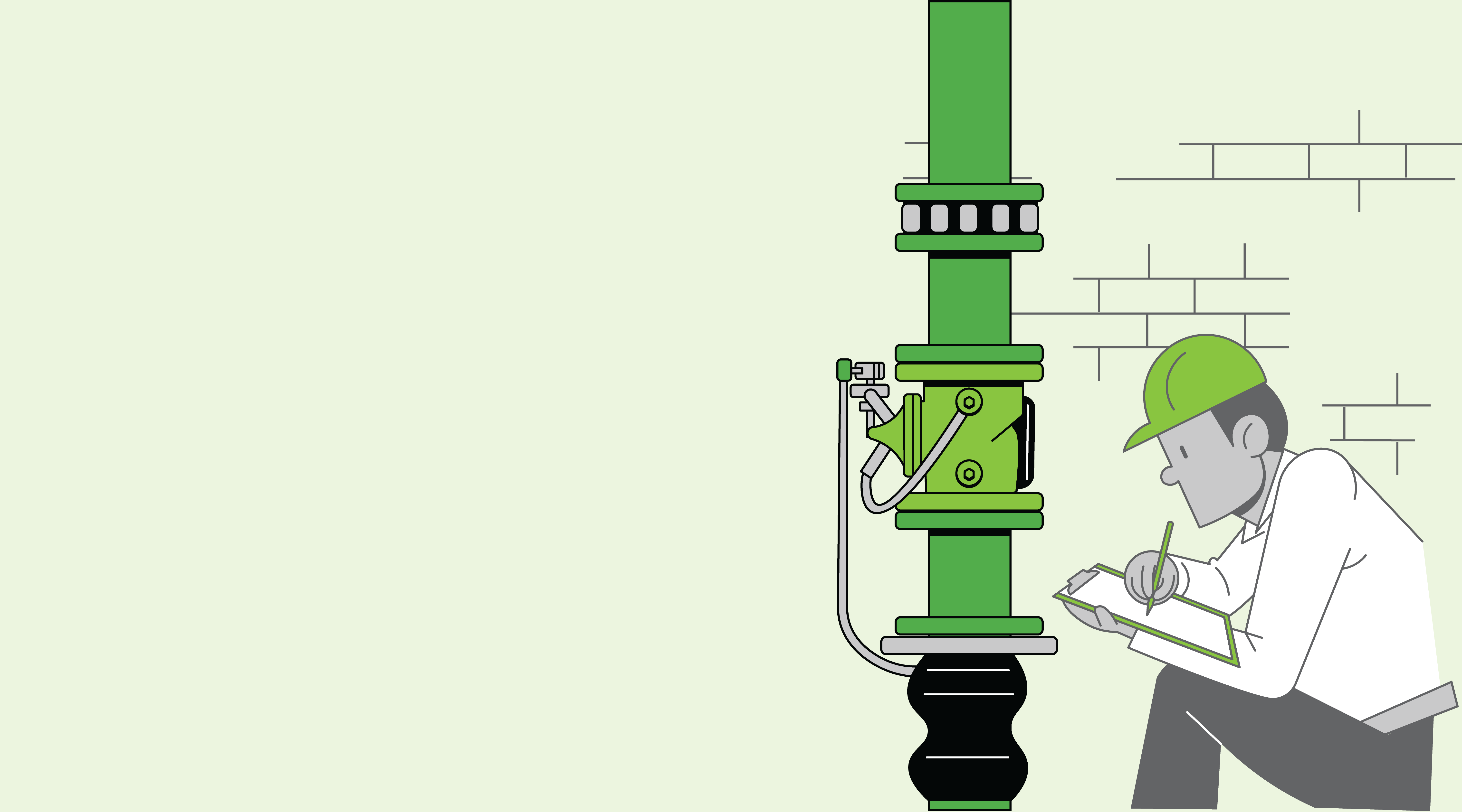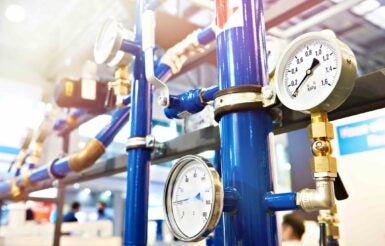Pumps and motors

Smart pumps prime your building for long-lasting savings.
Representing the latest technological innovation in variable speed pumping, smart pumps typically feature the most efficient motors on the market—electronically commutated motors (ECM). These advanced motors conserve energy by modifying pump speed based on changes in demand driven by various factors such as temperature, pressure, and occupant activity. Sensors inside the ECM act as a brain that monitors motor shaft speed and power draw to determine system conditions within the building and regulate pump behavior to maximize energy performance.
Benefits
-
Easy installation, easy maintenance
Smart pumps are programmed and integrated during manufacturing, making them ready to install out of the box with minimal time required for setup and commissioning. Additionally, because they are smaller and lighter than conventional solutions, they can be maintained by one person to reduce labor costs.
-
Reduced energy waste
ECMs can reduce power consumption by up to 50% compared to a traditional motor. Adding advanced speed controls to your smart pump system can lower energy use even more—by as much as 75% compared to an older model.
-
Quiet comfort
Smart pumps with variable speed controls are quieter than conventional systems that continually over-pump and feature noisy and distracting on/off cycling.
-
Reduced water waste
By using sensors and factory-programmed data, smart pumps reduce waste of pressurized water by precisely controlling water flow based on real-time demand.
Resources
Fact sheets
Planning tools
Frequently asked questions
What makes a pump a smart pump?
Smart pumps are efficient systems that combine a pump, drive, and integrated controller. Unlike conventional pumps, smart pumps offer increased energy efficiency and savings by incorporating sensors and a logic system that adjusts water flow based on actual demand.
What should I consider when purchasing a pump?
Energy use and total lifecycle cost are two of the biggest factors to consider when purchasing a pump. The pump’s energy use amounts to 40% of the total lifecycle cost of owning it. When combined with maintenance, that number increases to 65%.
When investing in a new pump, look beyond the initial purchase price, installation, and commissioning, which only equates to approximately 17% of the total lifecycle cost. Smart pumps are a smart investment, as they offer process efficiencies that can reduce your building’s energy and maintenance costs for the long-term.
How can I compare available pump options?
The Hydraulic Institute Pump Savings Calculator can help you make a side-by-side comparison of all investment factors—including model types, installation costs, and using a variable speed drive—to provide an estimate of expected energy savings over the life of the pump. The calculator accounts for elements such as speed control, efficiency, maintenance, and other useful data. You can also estimate payback, internal rate of return, and total cost of ownership.
Instead of seeking a like-for-like replacement or the lowest cost option, it is important to consider long-term impacts during the decision-making process. New pumps last 10 to 15 years, making it important to understand the lifetime cost of ownership and the long-term value of energy savings.
How can I tell what an individual smart pump has to offer before I purchase the product?
Hydraulic Institute collaborated with manufacturers and other organizations to develop the Energy Rating Label. Featured on the product package, the label applies to commercial and industrial pumps and circulator pumps.
How can I improve the efficiency of my pump?
There are three primary ways for pumps to become more energy efficient:
- Hydraulic efficiency
Manufacturers are improving their hydraulic engineering, making tolerances between moving metal pieces smaller and tighter, using advanced materials, and creating better designs for impellers. The better the hydraulic efficiency, the more efficient the pump. However, there is less room for improvement with hydraulic efficiency due to physical limitations, whereas motors and drives provide additional efficiency opportunities. - Motor efficiency
While motors in the U.S. are already generally efficient, electrically commutated motors (ECMs) offer an opportunity to enhance their energy performance even more. Using permanent magnets and electronics to spin the motor, ECMs are more efficient than permanent-split capacitor induction motors, which are an older technology still used in many motors. ECM circulators with integrated sensors enable precise flow control based on several factors—including temperature, pressure, and schedule—to better meet the water-flow needs for each application. ECMs are the most efficient type of motor on the market, and can reduce power consumption by 30 to 50%, compared to a traditional motor. For even more savings, add advanced speed controls to lower energy use by as much as 75%, compared to an older model. - Variable Frequency Drive (VFD)
VFDs slow the pump’s speed to meet the load and use less energy. This technology controls your pump and motor more precisely than by mechanical means, such as balancing and throttling valves. Smart pumps with integrated VFDs do not require external sensors to adjust to changes in system demand because they have every point on their pump curve programmed at the factory. While smart pumps offer the biggest savings opportunity, deploying wall-mounted VFDs is another impactful way to increase efficiency.
I’ve heard some smart pumps are “self-sensing,” but what does that mean?
Instead of a differential pressure (DP) sensor measuring performance at a distant point in the pipe run, smart pumps understand their exact pressure and flow condition at any time by:
- Continuously monitoring their input power and motor shaft speed.
- Knowing how those relate to the pressure and flow they can deliver based on precise performance mapping programmed into the pump at the factory.
This factory-programmed data makes smart pumps a durable, all-in-one solution that doesn’t require another piece of equipment with a data feed.




